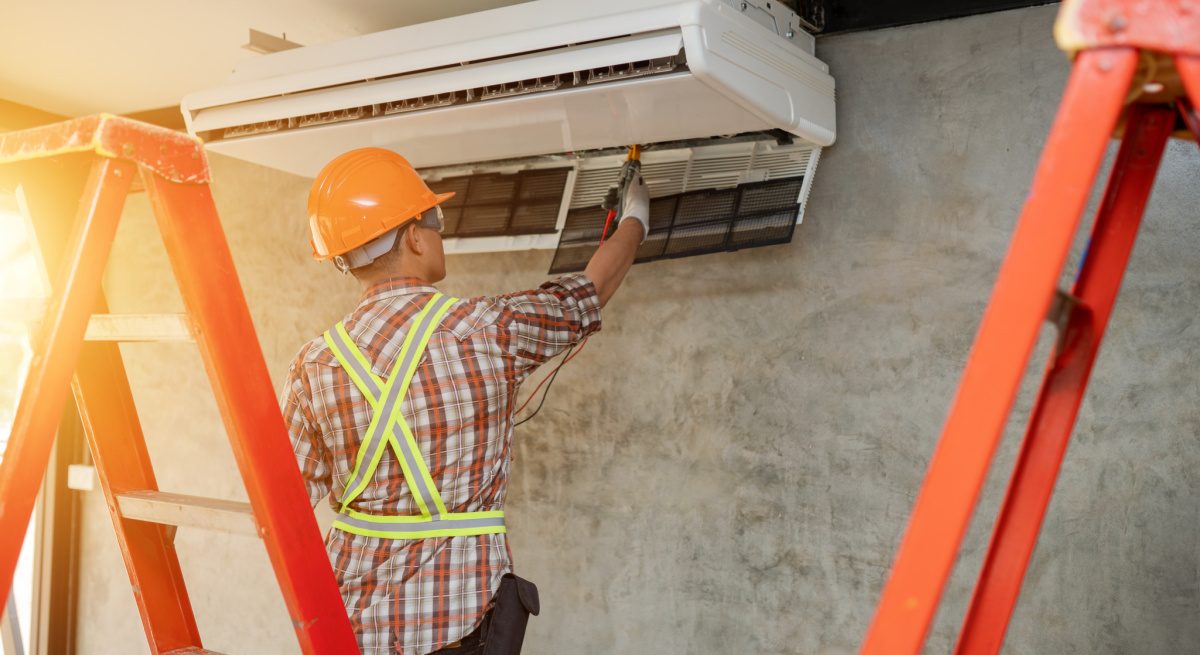HVAC Technologies to Make Indoor Dining Safer in the COVID-19 Era
3 Min Read By Clive Samuels
As restaurants face the challenge of creating safe, indoor environments for their employees and customers during the COVID-19 pandemic, indoor air quality has become a focal point given growing scientific evidence that the virus spreads through airborne transmission. HVAC – heating, ventilation and air conditioning – has never been more important as a critical tool in helping to slow the spread of the disease and create peace of mind for restaurant employees and diners.
Restaurants owners and managers can take advantage of existing and emerging HVAC technologies to lower the chances of airborne transmission among their staff and customers. While each restaurant has its own unique needs based on the existing HVAC system, size, layout and construction of the indoor dining and kitchen area, there are a range of solutions and measures to improve indoor air quality for every indoor environment.
Following is an overview of five HVAC technologies that restaurant owners and managers can consider in their efforts to make indoor dining as safe as possible for all involved. Regardless of which technology and system is used, they should not be considered the first line of defense, but instead as secondary measures in tandem with other sanitization procedures and protocols.
Air Filtration
Scientific research has shown that proper air filtration can help to control the transmission of COVID-19 via indoor air circulation. The degree of air filtration can be defined by its MERV, or minimum efficiency reporting value. Standard filters range from a MERV from 1 to 16 with the higher number representing stronger filtration.
According to the American Society of Heating, Refrigerating and Air-Conditioning Engineers (ASHRAE), air filters with MERV of 13 or greater are capable of blocking airborne viruses, and those with a MERV great than 14 are recommended. HEPA (high-efficiency particulate air) and ULPA (ultra-low particulate air) filtration surpasses even the highest-rated MERV filters in their ability to reduce viruses and bacteria in indoor air.
Restaurants that already have an HVAC system with efficient filters can upgrade to a higher MERV air filter at a relatively low cost. However, they should consult with an HVAC expert to ensure that their HVAC system is equipped to handle the increased air pressure resulting from higher-MERV filters so that a filter upgrade will not have damaging effects on their existing HVAC fan and motor systems.
High Ventilation
Proper ventilation is a key factor in maintaining healthy indoor air quality. It cannot prevent transmission of COVID-19 on its own, but it has been shown that circulating in a higher than normal amount of conditioned outdoor air into the indoor air environment can serve to enhance indoor air quality, and dilute potential viral load.
To achieve this, restaurant owners and managers can utilize an air economizer within their existing HVAC system or use a dedicated outdoor air system (DOAS) which is also known as a make-up air unit. In some situations when temperatures, humidity and outdoor air quality are ideal, it can also be possible to improve ventilation by opening doors and windows.
Air Ionization
Air ionization has been the focus of increased attention for its ability to improve indoor quality and for good reason. Also known as bipolar ionization, the process works by enlarging air particles so that air filters can more easily capture them. These ionized particles can attach to airborne viruses and other pathogens, neutralizing them as they are trapped in an air filtration system.
For restaurants, air ionization units can provide an efficient and effective solution for improving indoor air quality.
Ultraviolet Light
While widespread research of its effectiveness in eliminating SARS-CoV-2 has not been done, ultraviolet light is known to be a powerful way to sanitize surfaces. In particular, UV-C wavelengths are considered the most effective in killing or deactivating pathogens.
Specially designed lights that emit UV-C light can be installed within HVAC systems where they can sanitize the air when it is recirculated in front of the light. Ultraviolet germicidal irradiation (UVGI) cannot eliminate inactivated pathogens from the air, so UV-C lights should only be utilized in conjunction with a professionally installed air filtration system. Only FAR-UVC lamps can be located within the occupied space to irradiate viruses.
Humidity Control
Controlling humidity not only creates a more comfortable environment, but it also can be a powerful way to reduce the transmission of airborne viruses and other pathogens. In fact, the American Society for Microbiology recommends an indoor relative humidity between 40 and 60 percent to help defend against COVID-19.
To achieve and maintain the ideal level of humidity in their indoor spaces, restaurants can install a humidifier within the HVAC system, or dehumidify the air with other techniques and equipment provided by a qualified HVAC professional.
Despite the ongoing challenges of the COVID-19 pandemic, restaurants can leverage these HVAC tools and technologies to bring back the joy of dining out to their customers while providing a safer work environment for employees.


